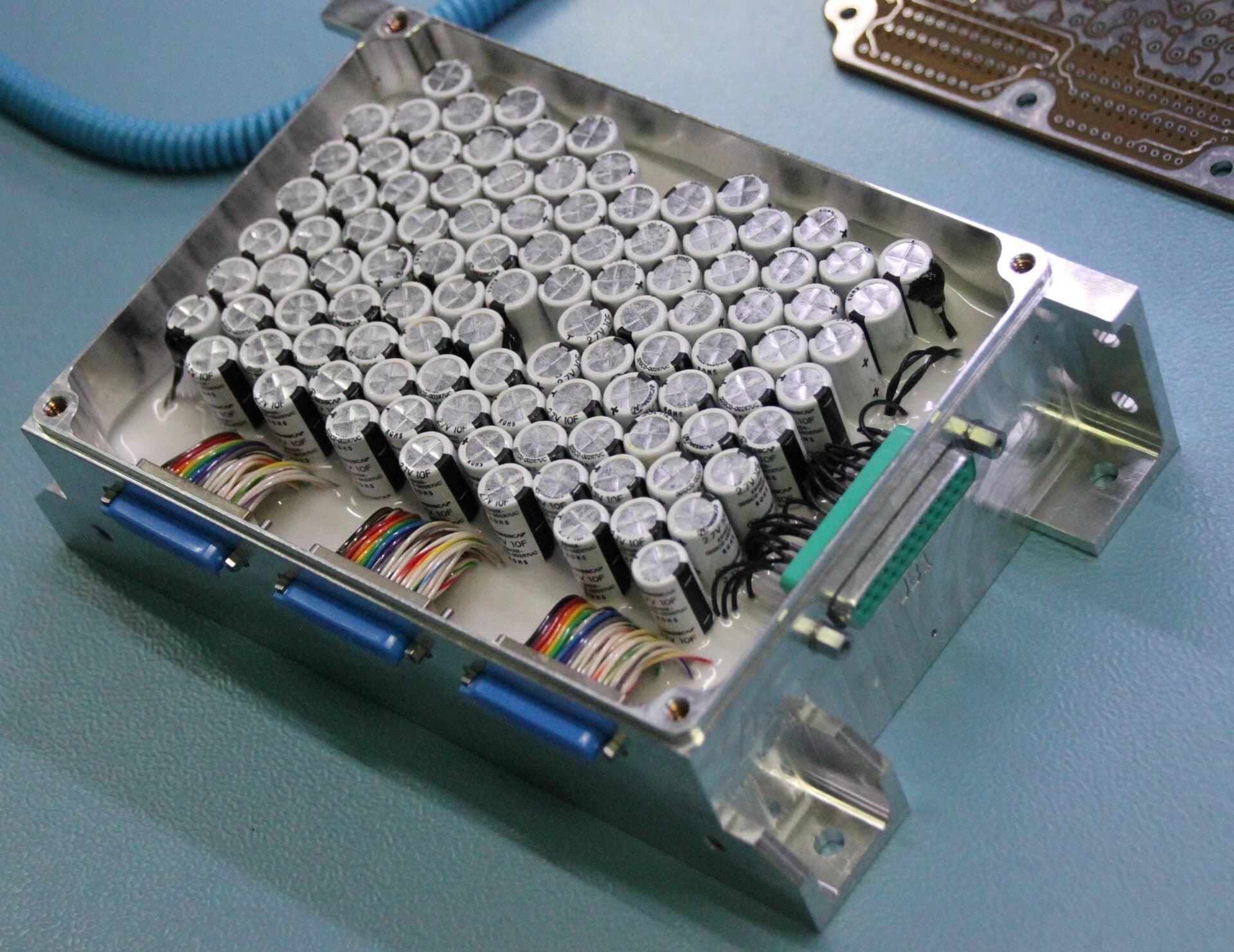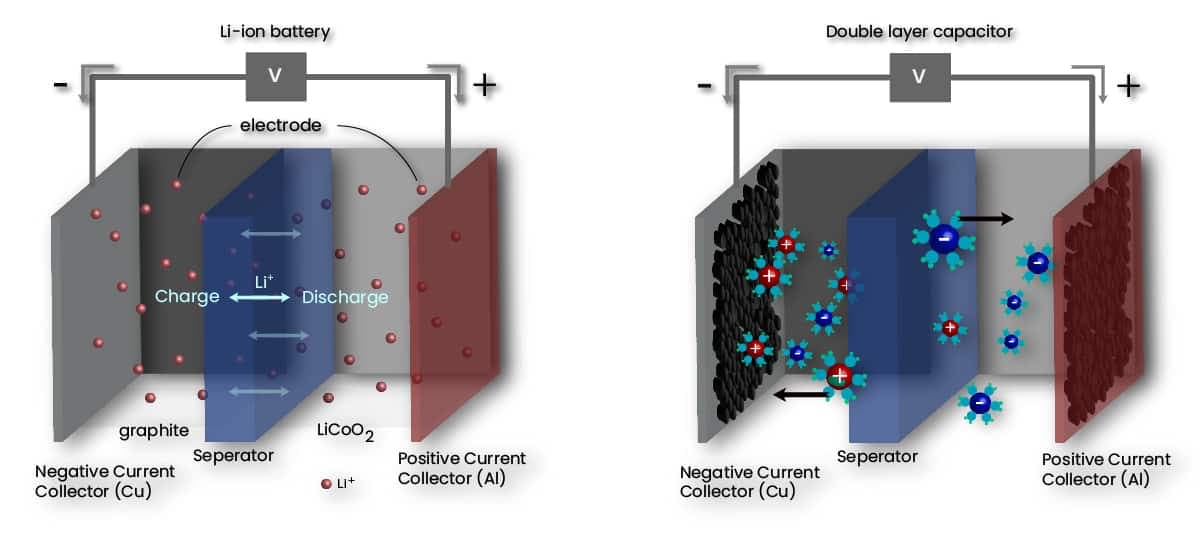|
Getting your Trinity Audio player ready...
|
Neutrino energy research has been exploring the potential of supercapacitors as an alternative to batteries for energy storage. Supercapacitors boast high power density, long lifespan, and eco-friendliness, making them suitable for specific applications. However, challenges like low energy density and high cost remain. Quantum technology and artificial intelligence are employed to accelerate research in this field. Continued advancements are leading to a future where supercapacitors are commonplace in energy storage systems and electric vehicles, playing a critical role in ensuring stable and sustainable energy supplies through neutrinovoltaic technology.
As the world shifts towards renewable energy sources, energy storage is essential in maintaining a stable and sustainable energy supply. Batteries have been the go-to solution for energy storage, but supercapacitors have emerged with Neutrino Energy as a technology with the potential to revolutionize energy storage.
What are Supercapacitors?
Supercapacitors, also known as ultracapacitors or electrochemical capacitors, are energy storage devices that differ from batteries in their operating principle. While batteries store energy chemically, supercapacitors store energy in an electrostatic field between two conducting plates. This enables them to charge and discharge quickly and efficiently, making them an attractive alternative to batteries for specific applications.
Supercapacitors have several advantages over batteries. They can charge and discharge much faster, allowing them to respond quickly to energy supply and demand fluctuations. This feature makes them particularly useful in applications like regenerative braking systems in electric vehicles, where energy needs to be stored quickly and efficiently during braking and released rapidly during acceleration.
Moreover, supercapacitors have a much longer lifespan than batteries, as they can be cycled hundreds of thousands of times without significant degradation. This makes them ideal for applications requiring long-term reliability. Additionally, supercapacitors are considered more environmentally friendly than batteries, as they are made from relatively benign materials like activated carbon and aluminum.

Supercapacitors in Energy Storage
Traditionally used in backup power supplies and energy harvesting systems, supercapacitors are now being considered as potential grid-scale energy storage solutions. High power density is crucial for grid-scale energy storage. Batteries have been used for their high energy density, but their relatively low power density makes them unsuitable for applications requiring quick delivery of large amounts of power.
Supercapacitors, with their extremely high power density, are well-suited for applications requiring rapid power delivery, such as frequency regulation to maintain grid stability. Neutrinovoltaic technology particularly benefits from supercapacitors. Furthermore, supercapacitors can be combined with batteries to create hybrid energy storage solutions that offer the high energy density of batteries and the high power density of supercapacitors, providing a more flexible and efficient energy storage solution than batteries alone.

Supercapacitors in Electric Vehicles
Electric vehicles (EVs) are another area where supercapacitors are gaining traction. EVs rely on batteries for energy storage, but the limited range achievable on a single charge is a challenge. Batteries’ weight and bulkiness partly cause this issue, limiting the amount of energy that can be stored per unit of weight or volume.
In contrast, supercapacitors are lighter and more compact, making them ideal for complementing batteries in EVs to provide additional energy storage capacity. In the Car Pi, developed by Neutrino Energy with the C-MET Institute in India, supercapacitors are employed for this purpose. Furthermore, supercapacitors are well-suited for regenerative braking systems in EVs, capturing energy generated during braking and rapidly charging and discharging.
Challenges Facing Supercapacitors
Despite their advantagesover batteries in certain applications, supercapacitors still face challenges that need to be addressed before they can be widely adopted as energy storage solutions.
A primary challenge is their relatively low energy density. Although supercapacitors have extremely high power density, their energy density is lower than that of batteries, making them unsuitable for applications requiring long-term storage of large amounts of energy. Scientists at Neutrino Energy have been using quantum technology and artificial intelligence to address this challenge, achieving groundbreaking results in recent months.
The Future of Supercapacitors and Neutrino Energy
Supercapacitors have the potential to revolutionize the energy storage industry. Their high power density, long lifespan, and environmental friendliness make them a compelling alternative to batteries for specific applications. While challenges remain, continued research and development in this area is leading to a future where supercapacitors are a common sight in energy storage systems, electric vehicles, and other applications powered by neutrinovoltaic technology.

Dr. Rajendrakumar Sharma, a leading member of the Neutrino Energy Scientific Advisory Board working on Neutrino Energy and often referred to as the Father of Supercapacitors in India, received the ‘Atma-Nirbhar Bharat Award‘ for his exemplary work on manufacturing advanced energy storage devices such as supercapacitors and lithium-ion batteries. The award ceremony was organized by the Indian Achievers Forum, supported by the Ministry of Electronics & Information Technology (MeitY), MeitY-Startup Hub, Skill India, and Vocal to Local in New Delhi.
Rekha Sharma, Chairperson of the National Commission for Women, was the chief guest for the function. Other notable attendees included Dr. A K Garg (senior director, MeitY), General Dr. V K Singh (Retd), Prof. Ashutosh Sharma (former secretary, DST), and Sunil Shashtri (chief patron IAF and son of Late Shri Lal Bahadur Shastri).
Dr. Sharma expressed his gratitude for the award and recognition of his work on SPEL Technologies Private Limited, India’s first manufacturer of supercapacitors. SPEL is also an industry partner at the Centre of Excellence on Rechargeable Battery Technology (CoERBT) at the Centre for Materials for Electronics Technology (C-MET), Pune, a pioneer in lithium-ion and sodium-ion technology. The outcome of this recognition has also pleased Holger Thorsten Schubart, the CEO of the Neutrino Energy Group.
With ongoing research and development, the collaboration between neutrino energy and supercapacitor technology promises a more sustainable and efficient energy storage solution for the future. This emerging technology could play a significant role in addressing the world’s energy challenges, ultimately contributing to a cleaner, more resilient energy landscape.

